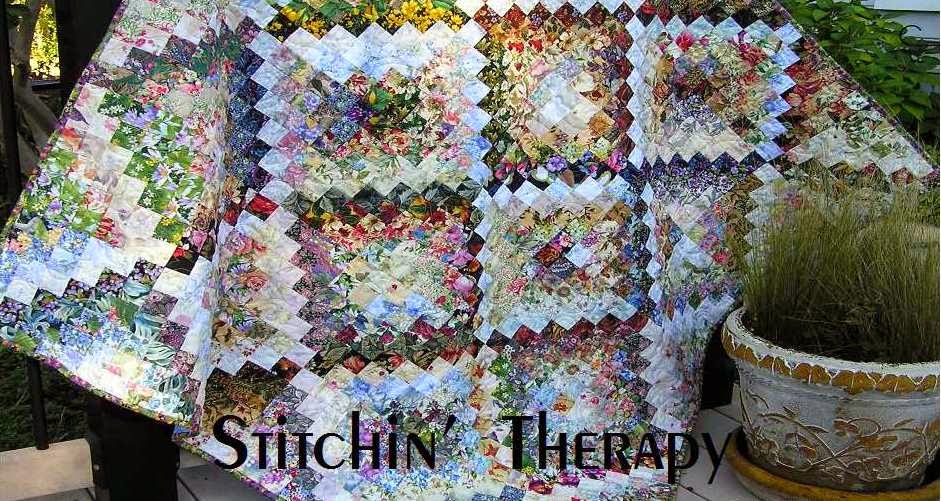Here is my original layout that I created in EQ 5 for the blooming 9 patch pattern. I was working from a photo in a magazine and then later found a pattern in an older book I had. Unfortunately , the pattern in the book did not give very good details on fabric or value selection. Their version jumped from blue to yellow to green....but it did show the block layout . So I figured a quick plan in EQ5 would be all I needed.
The center 9 patches were easy...both light fabrics with the #2 light in the center and corners. Note that the diagram has it reversed. Then the next round is the #2 fabric in a plain square. This is where I realized that the placement and position of the fabrics in the 9 patch was going to be important. Once on the design wall the original placement was "choppy" to me and did not blend across the design like I intended. So I switched a row on the 9 patch and achieved a better flow.
This became a guideline for the rest of my construction......The large floral should be placed in the corners and center of the 9 patch block, and the smaller floral should be the other 4 patches of the block.
 That placement gives better blending from one round to the next. Here's what I have so far on the design wall. I also have 4 of the lightest 9 patches in my center instead of three. This will increase the length and turn the original lap quilt into a "foot of the bed throw".....I need a term to describe this use, I guess. Anyway, it will turn out about 50 inches by 80 inches. The center area is large enough for some appliqued vines and flowers ....maybe I will use some of the sun painted fabrics after all.
That placement gives better blending from one round to the next. Here's what I have so far on the design wall. I also have 4 of the lightest 9 patches in my center instead of three. This will increase the length and turn the original lap quilt into a "foot of the bed throw".....I need a term to describe this use, I guess. Anyway, it will turn out about 50 inches by 80 inches. The center area is large enough for some appliqued vines and flowers ....maybe I will use some of the sun painted fabrics after all. Insight: Take the time to plan your design and layout. It could save some ripping out!
Insight: Be flexible. Of course, I am not good at this....but it is a good reminder to me to try.
Happy stitches.


1 comment:
Thanks for your "how to" tutorial. Very interesting.
Post a Comment